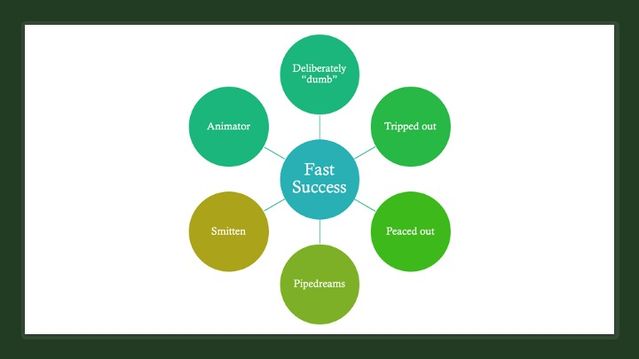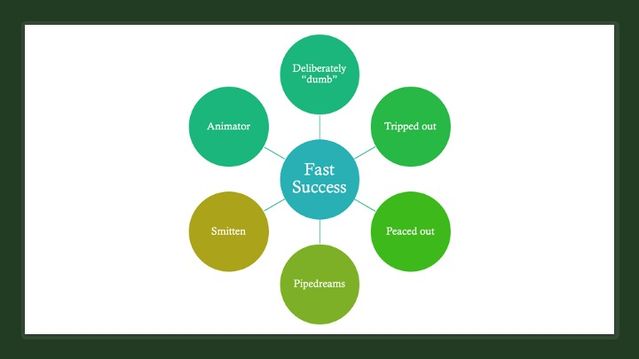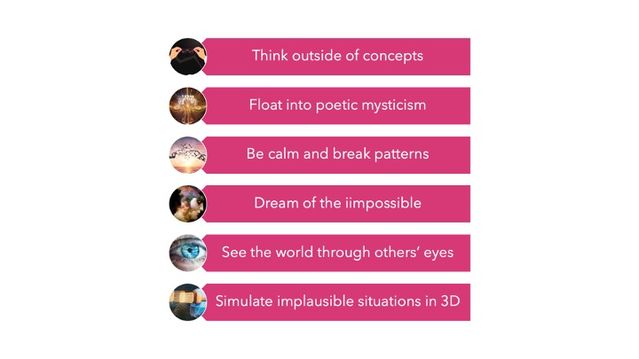Productivity
How Can You Accelerate Your Productivity and Success?
New research helps explain the biological basis of exponential progress.
Posted January 14, 2020 Reviewed by Ekua Hagan
"Timepieces holding / My life in their hands." — Burton Cummings
Time holds us captive. And step-by-step approaches to achieving our goals can lure us into the belief that we must obey the linear laws of thinking in order to be successful. However, extensive research indicates that our brains can almost transcend time and work much faster. If we reflected on these mechanisms, might we not have greater insight into how our personal progress can be accelerated?
Below is a model that describes six different ways in which brain processing is accelerated.

Savant skills
Take savants, for example. Though they may suffer from autism and other mental disabilities, they have unusual skills in being able to recall unusual amounts of information, or in being able to calculate the answers to mathematical problems at lightning speed. They may seem to be "dumb," but they are not.
Many experts believe that we all have these skills, yet we do not access them because they reside deep within the unconscious brain. When you look more closely at savant children, you see that their brains are not wired to follow any of the usual frameworks for understanding. They simply do so without any respect for "stages" or concepts in thinking.
It is possible to reproduce this privileged access to raw information by administering magnetic pulses to the brain, effectively inhibiting the left anterior temporal lobe (ATL). This has led researchers to believe that if you inhibit left brain function, and compensate with the right brain, you may indeed transcend the usual processes and time needed to figure out the answers to things.
In fact, this privileged access to fast processing does not improve with practice. Indeed, for most successful musicians, sportspeople, gamers, school students and expert workers, practice plays a very limited role. Sir Isaac Newton, the philosopher Ludwig Wittgenstein, mathematician Srinivasa Ramanujan, writer Lewis Carroll, and the poet W. B. Yeats all fit the profile of autism at its best. In these people, there is a sensory hypersensitivity and scrupulous attention to detail that defies time since they have direct access to detail.
LSD
When people use LSD, the connections within the default mode network (DMN) are disrupted. As a result, there is less mental time travel to the past. In fact, they experience the world as mystical, and time and space no longer have the usual hold on them. Studies also indicate that the usual connections between the cortex (higher thinking centers), striatum (implicated in timing behavior), and thalamus (controls the flow of information to the cortex) are disrupted.
Usually, disruptions to this network will disrupt cognitive control. The upside of this feeling of disarray is that once you can tolerate it, the absence of control means that you are no longer under the influence of a brain that insists that you work with time.
Meditators may process information more deeply. As a result, their brains speed up attention to what is relevant. Many known transcendent people such as St. Augustine have spoken to the absence of a distinction between past, present, and future. And newer studies confirm that meditators do in fact have a distorted sense of time, space, and their bodies. This altered sense of time corresponds with changes in the posterior cingulate, right temporoparietal junction, and cerebellum, though different kinds of meditation have different brain effects. In the brain, meditation can reduce anxiety and addiction too.
Some people have insights as a result of unusual mental processing in dreams. When we dream, we become immersed in an alternate "reality." The brain puts two and two together, and as a result, unusual insights may occur.
To do this, the brain does not follow the usual rules of waking consciousness. The brain may even construct a fictitious story on the way to these insights. The usual intrusions of external reality do not apply. Prefrontal cortex activation is decreased. A sense of immersion in the present dominates. There is no reflection, judgment, or reasoning. It's as if the brain is playing around with thoughts and ideas in a way it cannot when you are awake. This occurs in part due to a reduction of the DMN influence on the ATL, resulting in an alteration in the usual order of things in the brain called entropy.
Falling in love
When you fall in love, time may seem to stand still, or fly, depending on the circumstance. In both instances, the brain does not process time in the usual way. It's no surprise since romantic love can change the brain. While these effects are complex and diverse, we do know that people who are in love can see the world through the eyes of others more easily.
During this phase of being in love, the brain releases more dopamine and endorphins, leading to an overall sense of wellbeing. This rewarded state changes how you see the world. Also, activation of the dorsal anterior cingulate cortex during romantic love may improve one's insight. And negative emotions such as sadness are less intrusive. Emotional and social processing is enhanced in the brain.
Virtual reality (VR)
There is an overlap between the brain states induced by psychedelics, dreaming and virtual reality. In fact, your brain has an innate virtual reality generator, especially when you are dreaming. When you are exposed to external VR, your brain responds similarly to when you are dreaming. The usual boundaries fo time and space do not apply, and you are immersed in an alternate reality. In fact, VR can improve memory, and help people problem-solve more effectively. It can also help people with finding directions.
How to make sense of these reflections
Accessing savant-like qualities, using LSD, meditating, dreaming, falling in love, and using VR can all accelerate problem-solving. Many of these modalities may be threatening or not accessible, so how do you use this information on a day to day basis?
Strive to feel or imitate these states of mind:

Alternatively, engage in the following activities for 20 minutes each day. Then, tweak and see which activities are most engaging, and do those.

When you reflect on these guidelines, you will see that your brain is in fact wired for accelerated functioning. However, you have to ignore the normal organizing principles such as time and memory to stimulate new insights and accelerate problem-solving.




